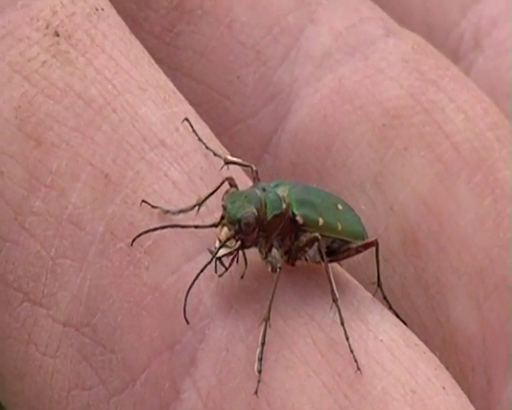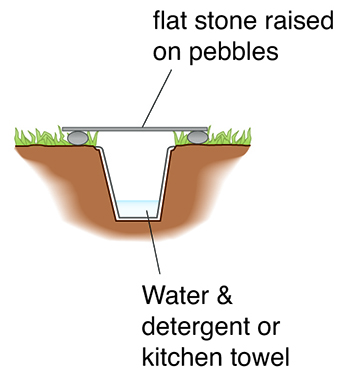3.1 Sampling on the soil surface
Insects that move over the ground are sampled with a pitfall trap (Figure 13).
This trap is made by simply burying a large yoghurt pot or jam jar in the ground so that the rim of the container is flush with the soil surface. Insects running along the ground fall into the container and cannot climb out. The opening of the trap is covered with a flat stone raised off the surface with pebbles, allowing insects to enter the trap but preventing small mammals from falling into it. To trap live insects, the bottom of the container is filled with dry vegetation or a folded kitchen towel, paper tissues or similar, giving the insects somewhere to settle. Pitfall traps are good for collecting ground beetles (family Carabidae) and wolf spiders (family Lycosidae).
If insects are to be collected for later identification, water with a drop of washing-up liquid or ethylene glycol (antifreeze) should be added to the trap. Identification of many insects can only be done with dead specimens and sometimes dissection is needed. Collecting any living organism for identification has to be done responsibly and for good scientific reasons.
Activity 7 Pitfall traps
Can you think of any disadvantages to the live trapping of insects described above? Write your answer in the box below.
Answer
Yes, there are some disadvantages. One disadvantage of pitfall traps is that they will collect only active animals. Also, spiders and some beetles are predators so may bias your sample by eating other insects in the trap.
Now watch the following video which shows a pitfall trap survey.


